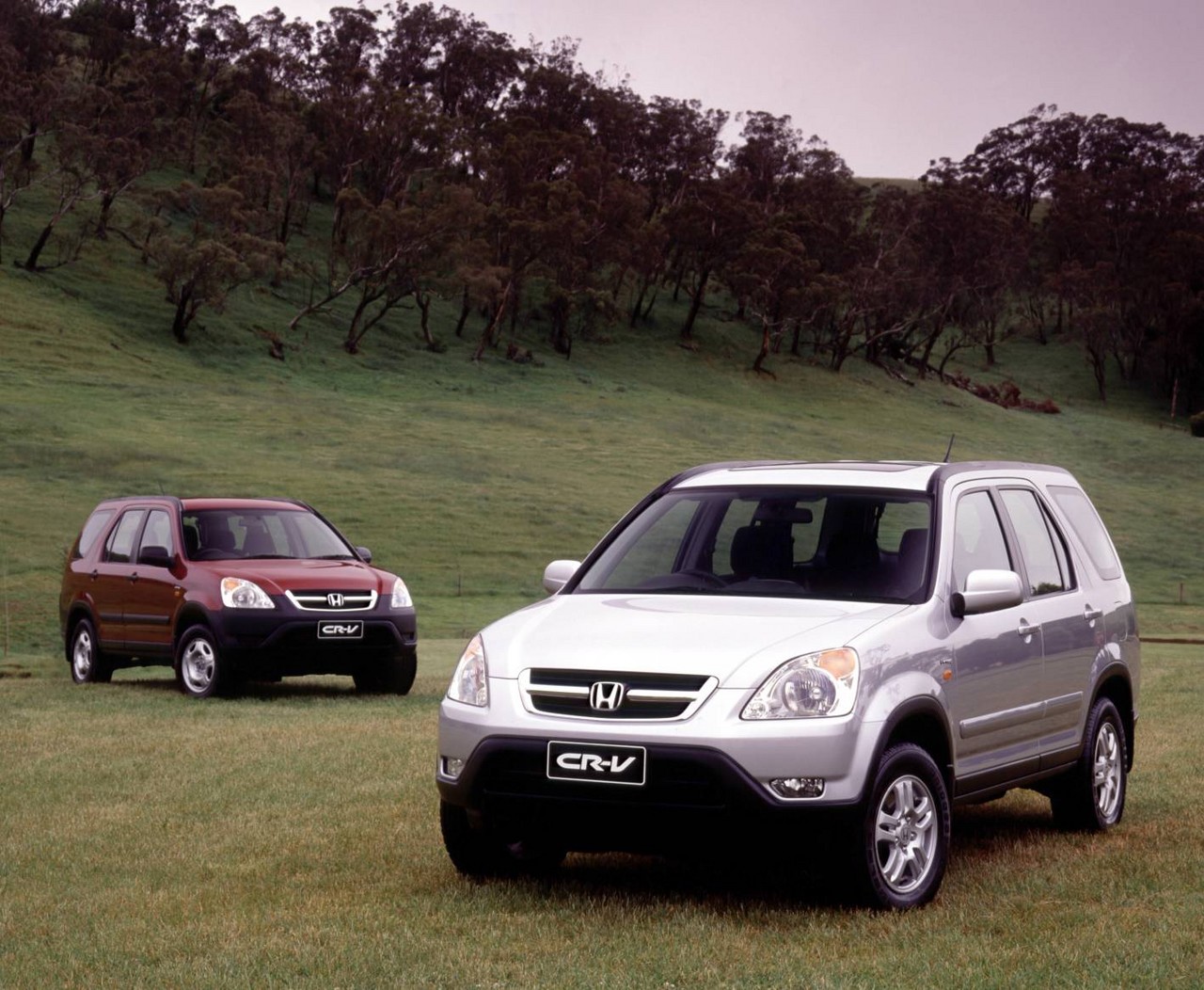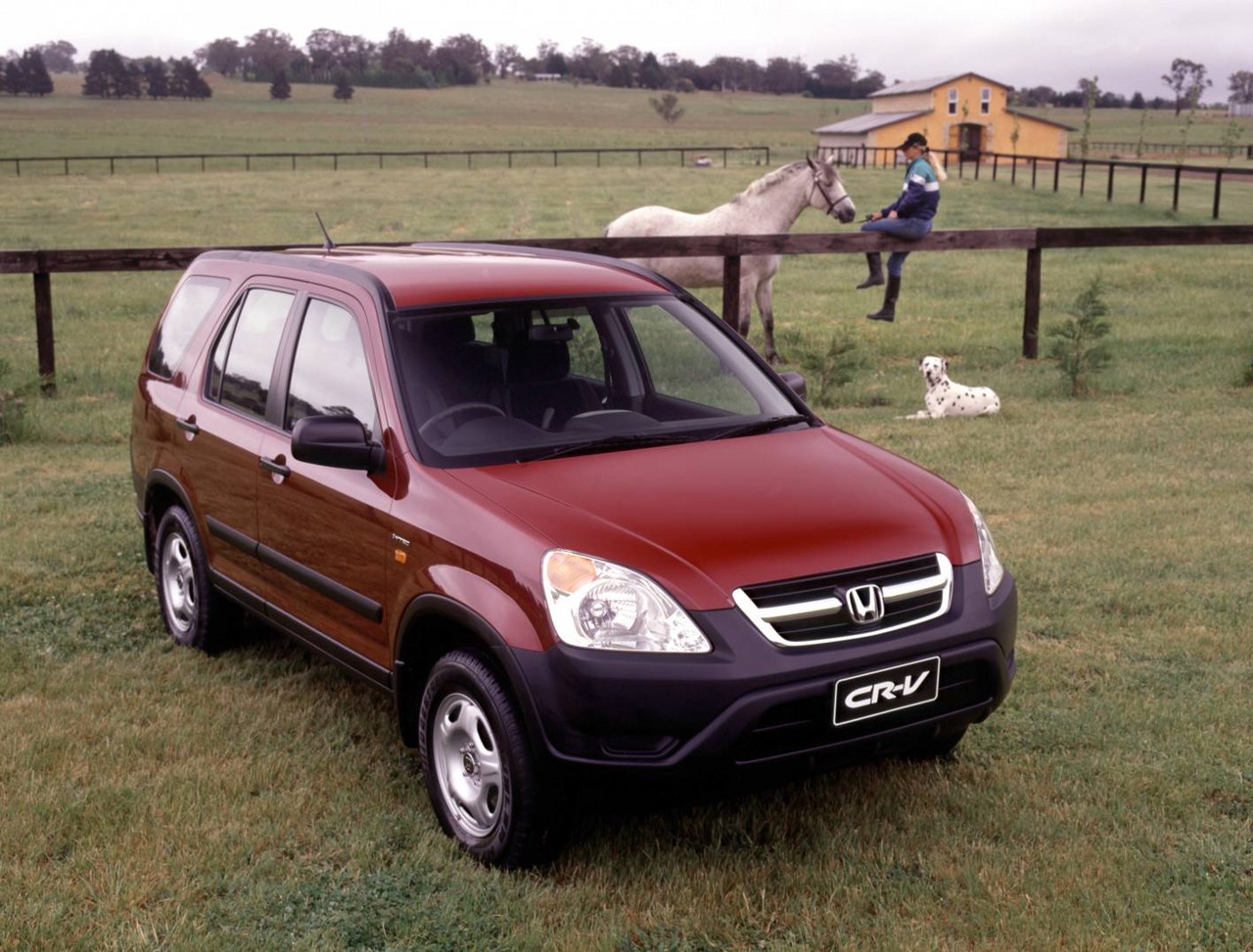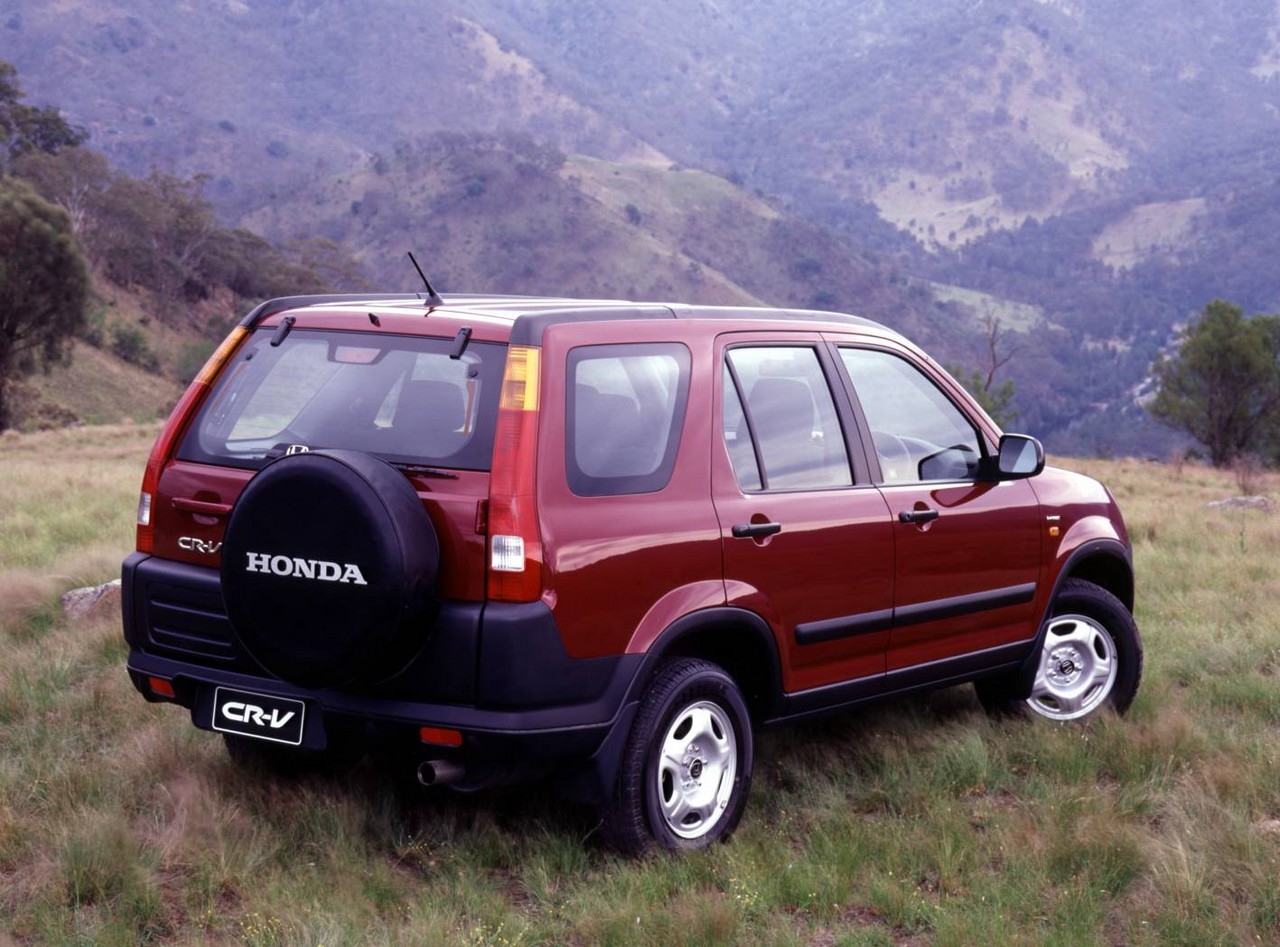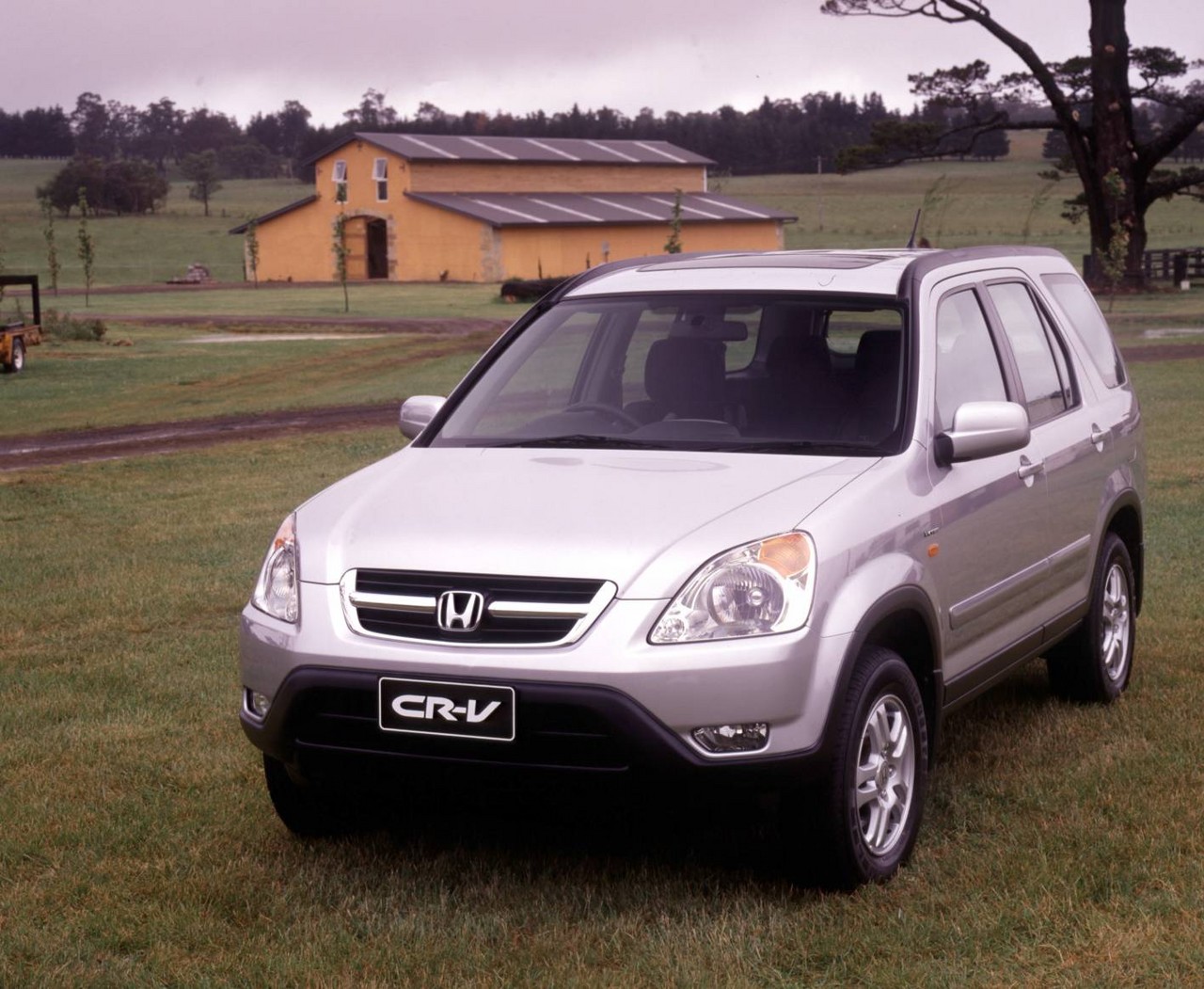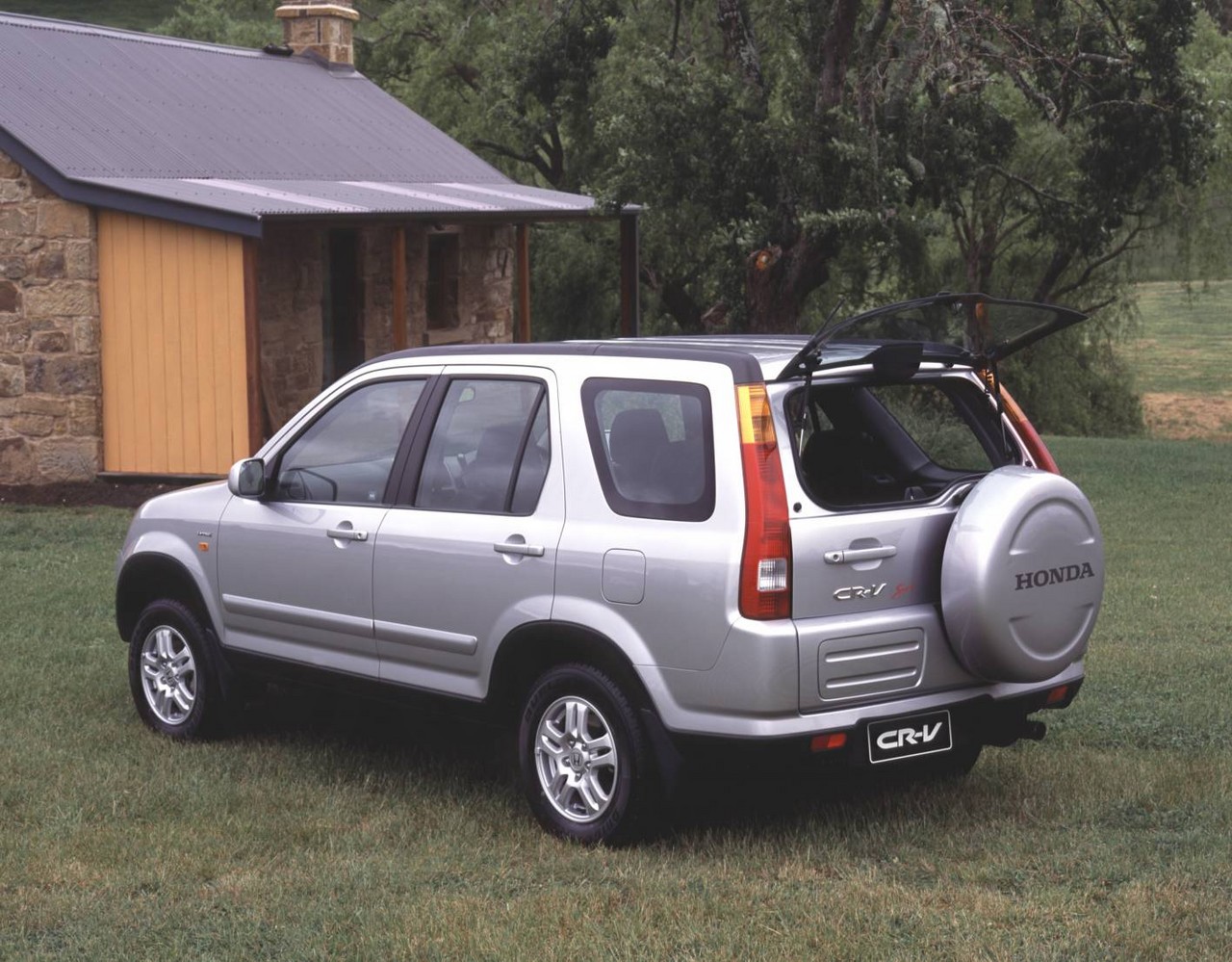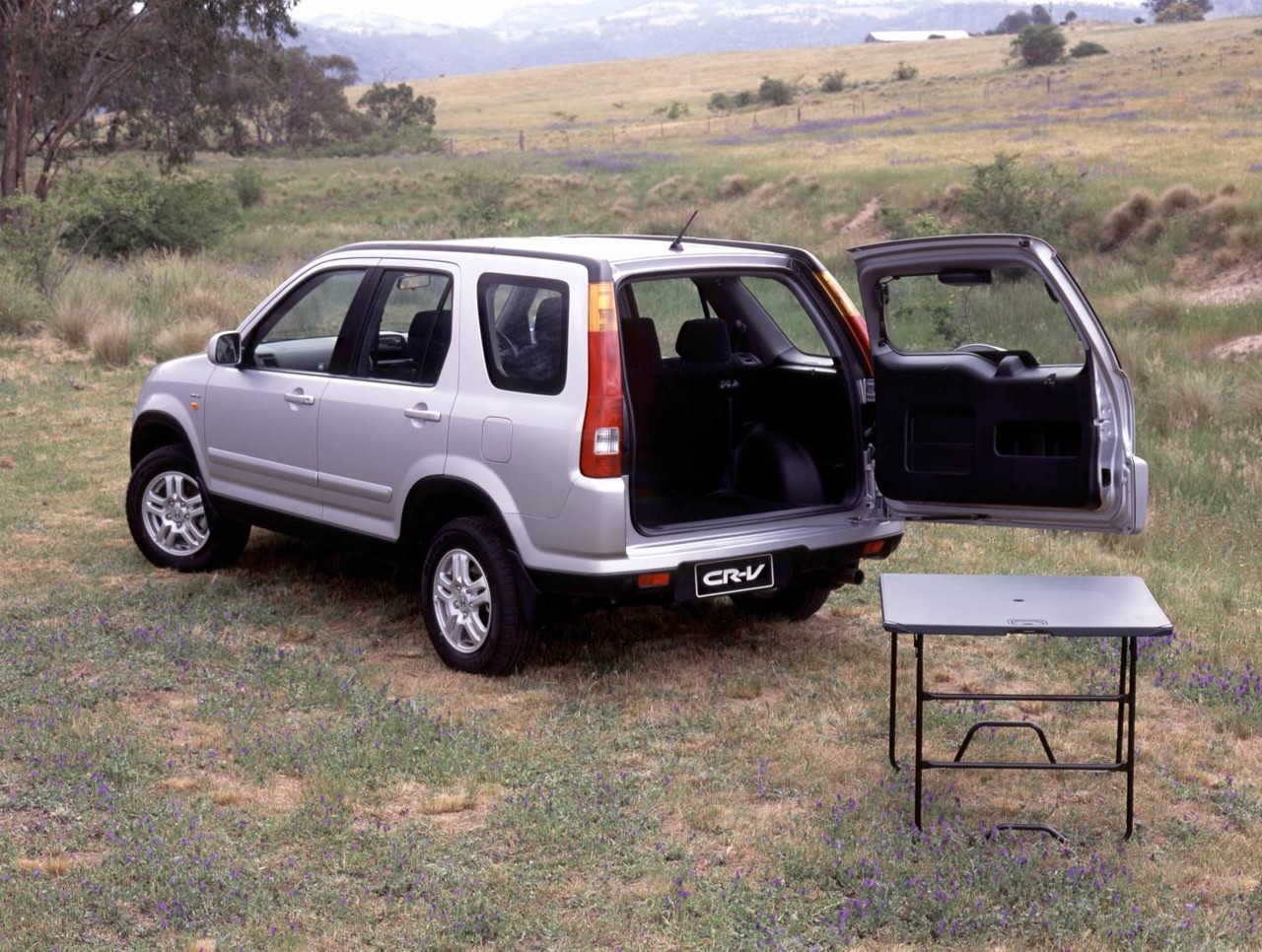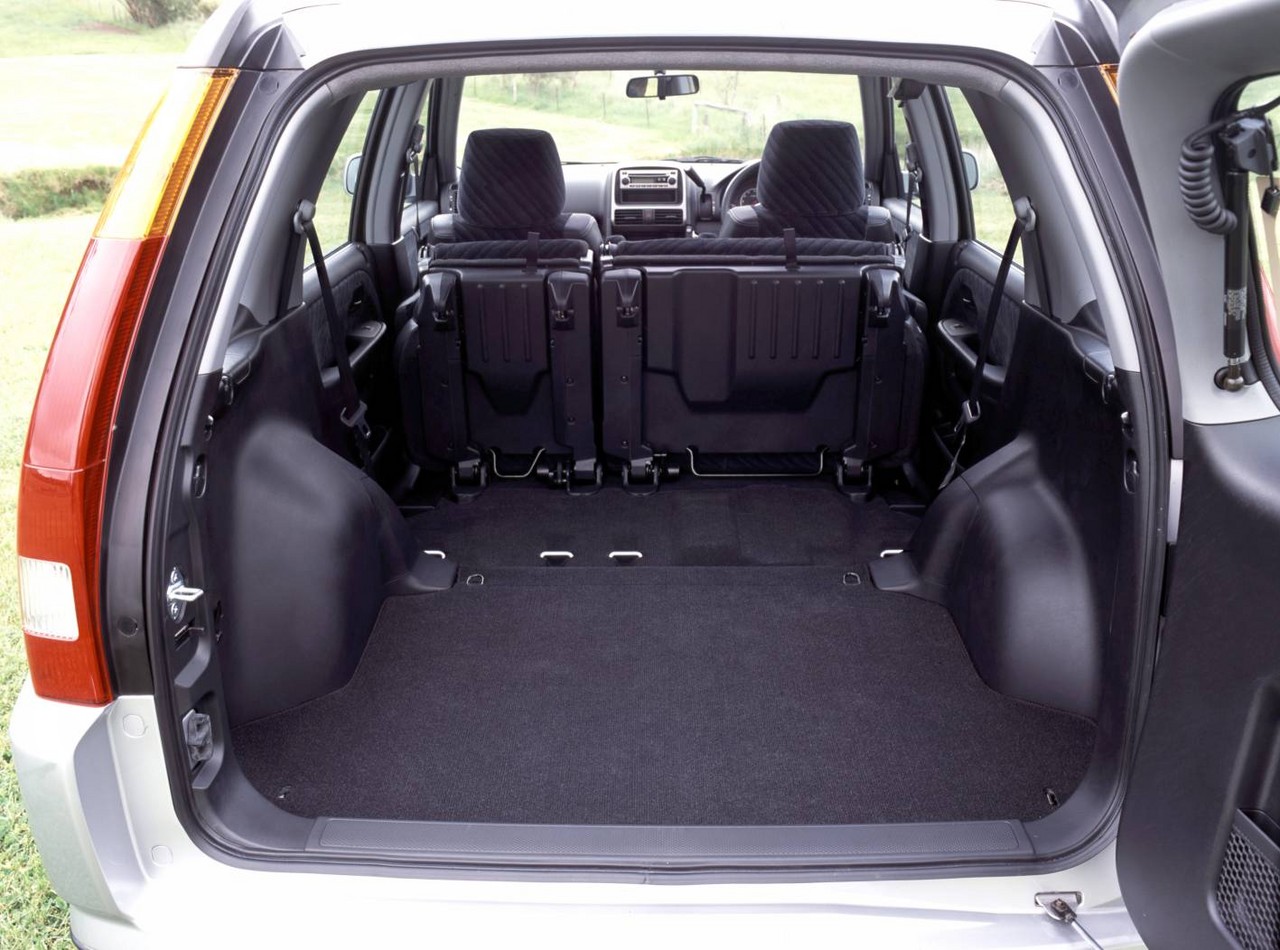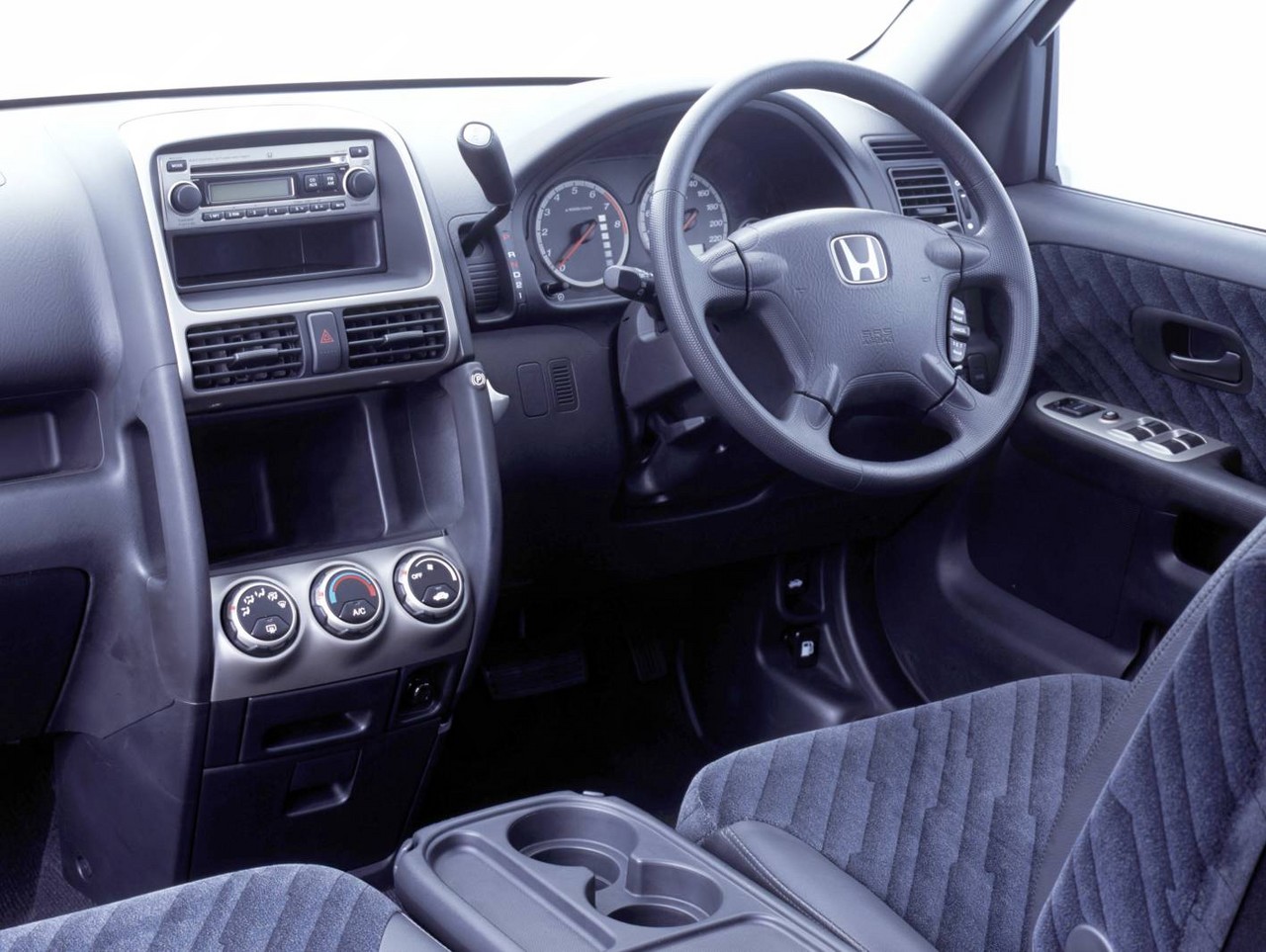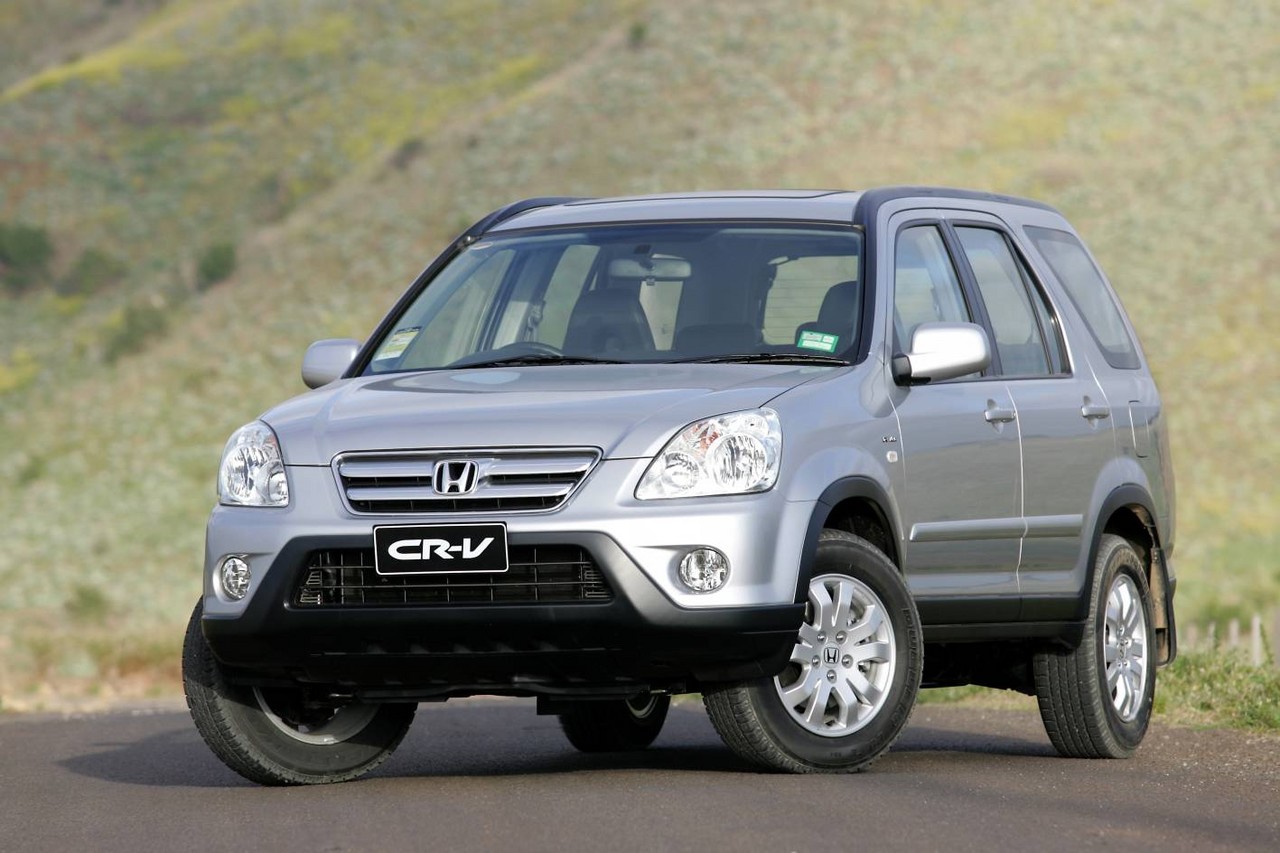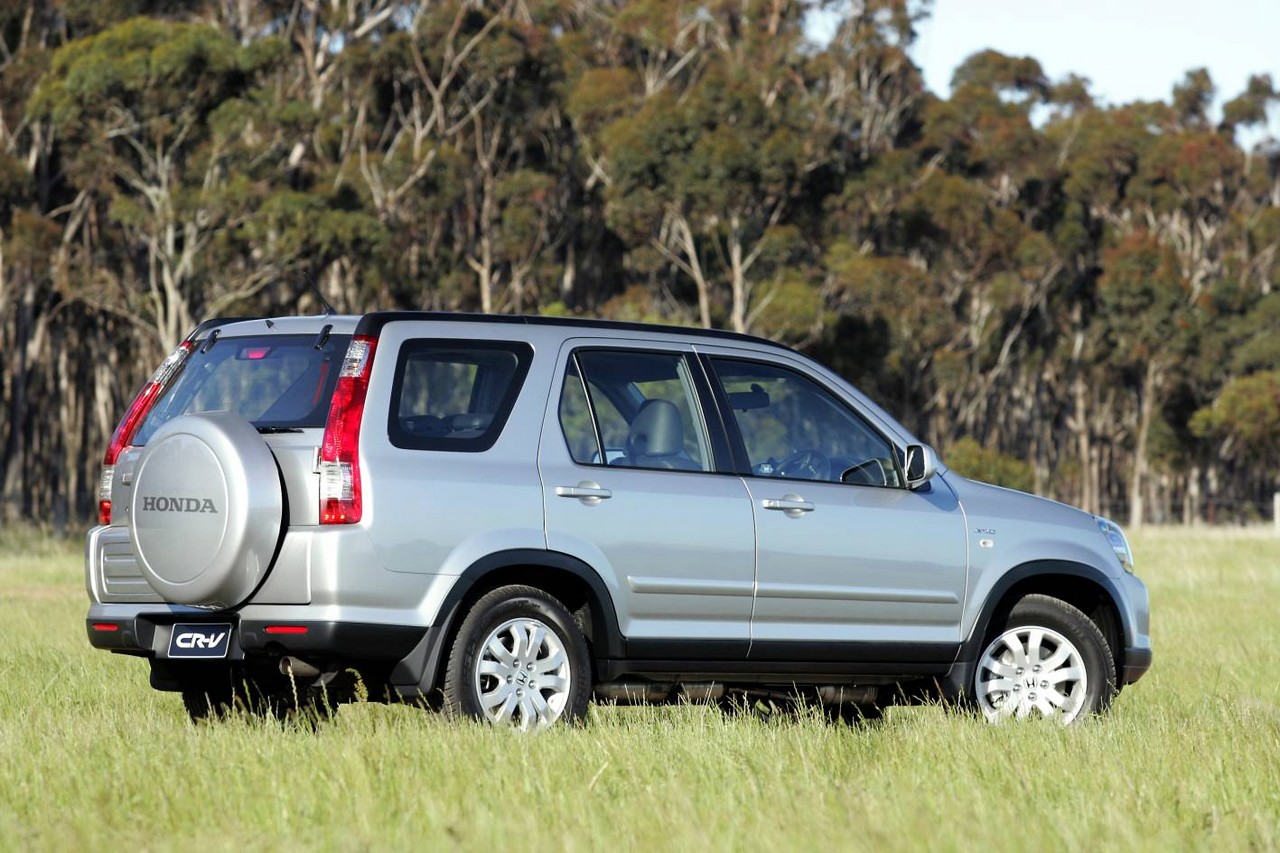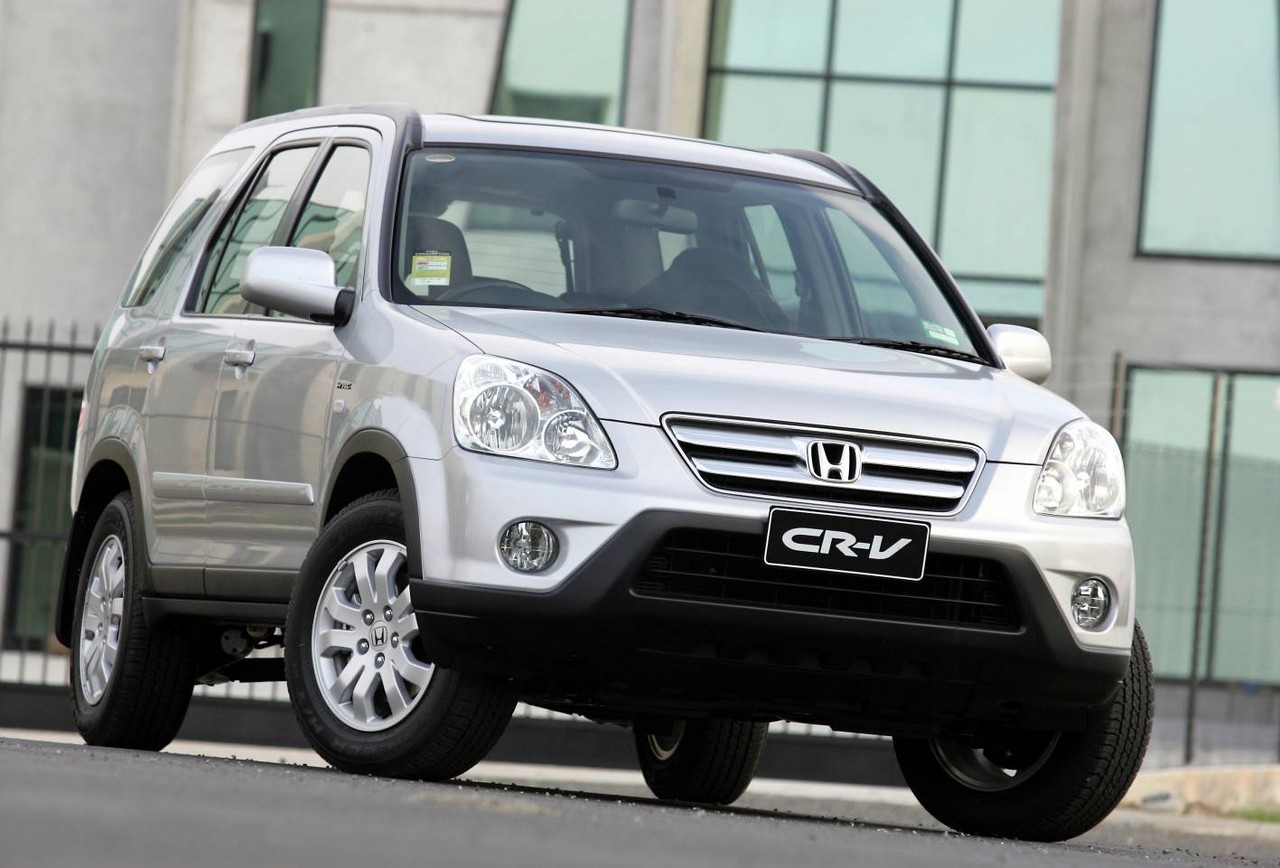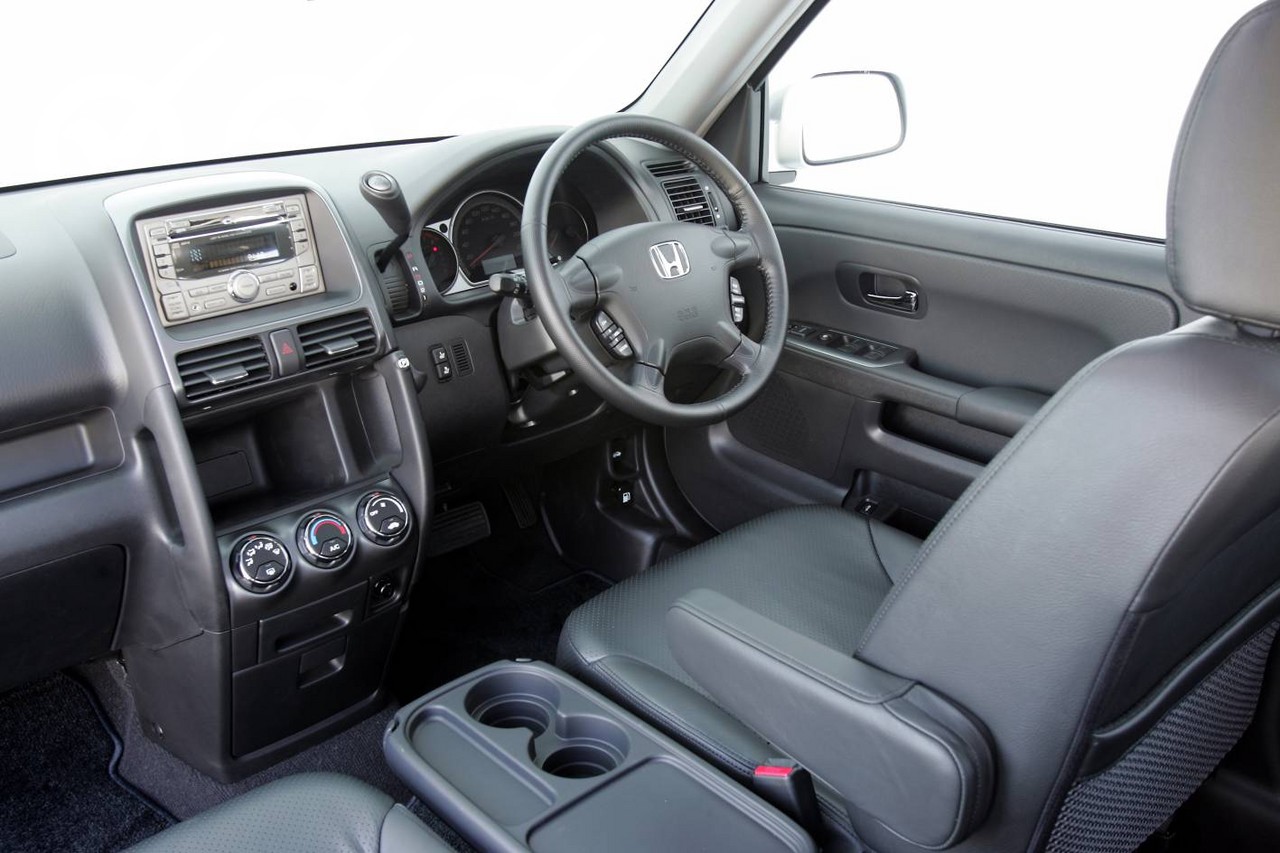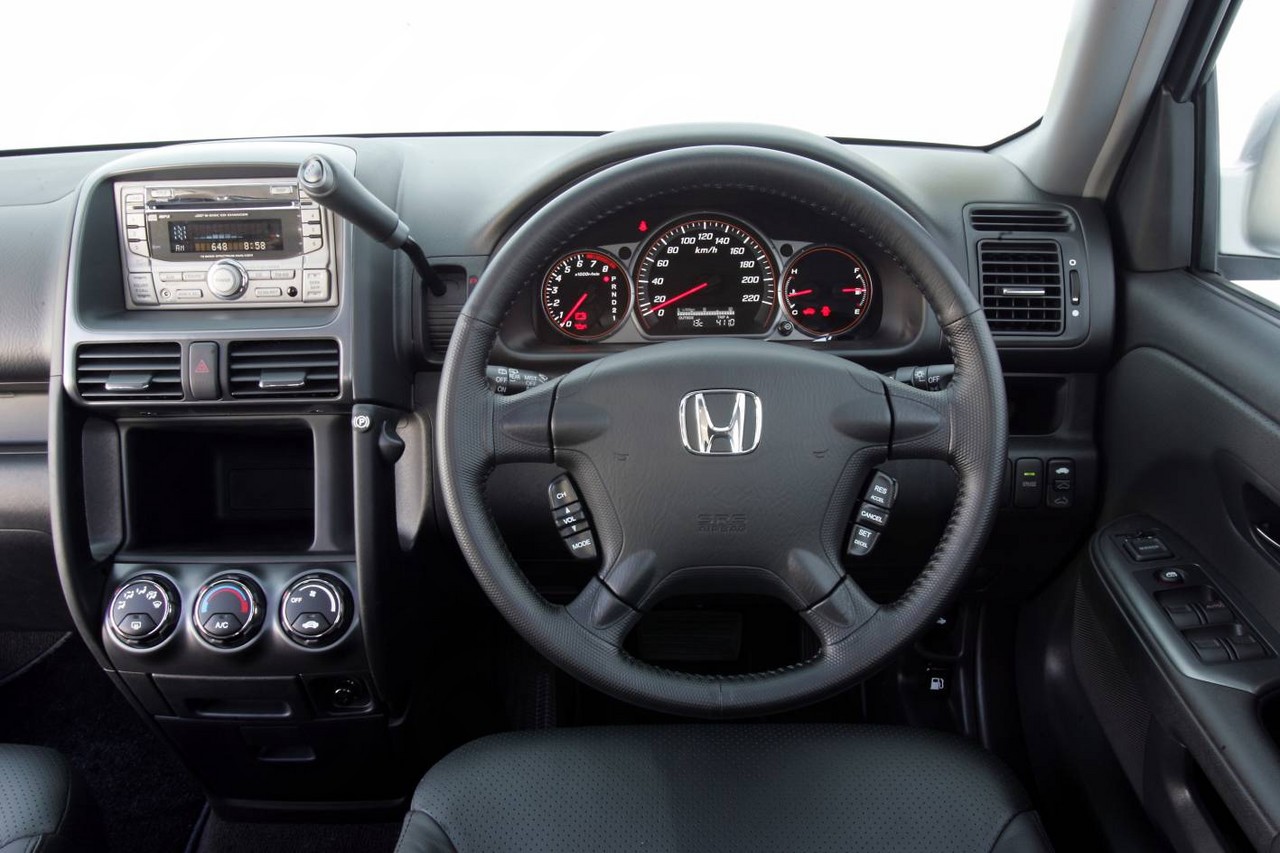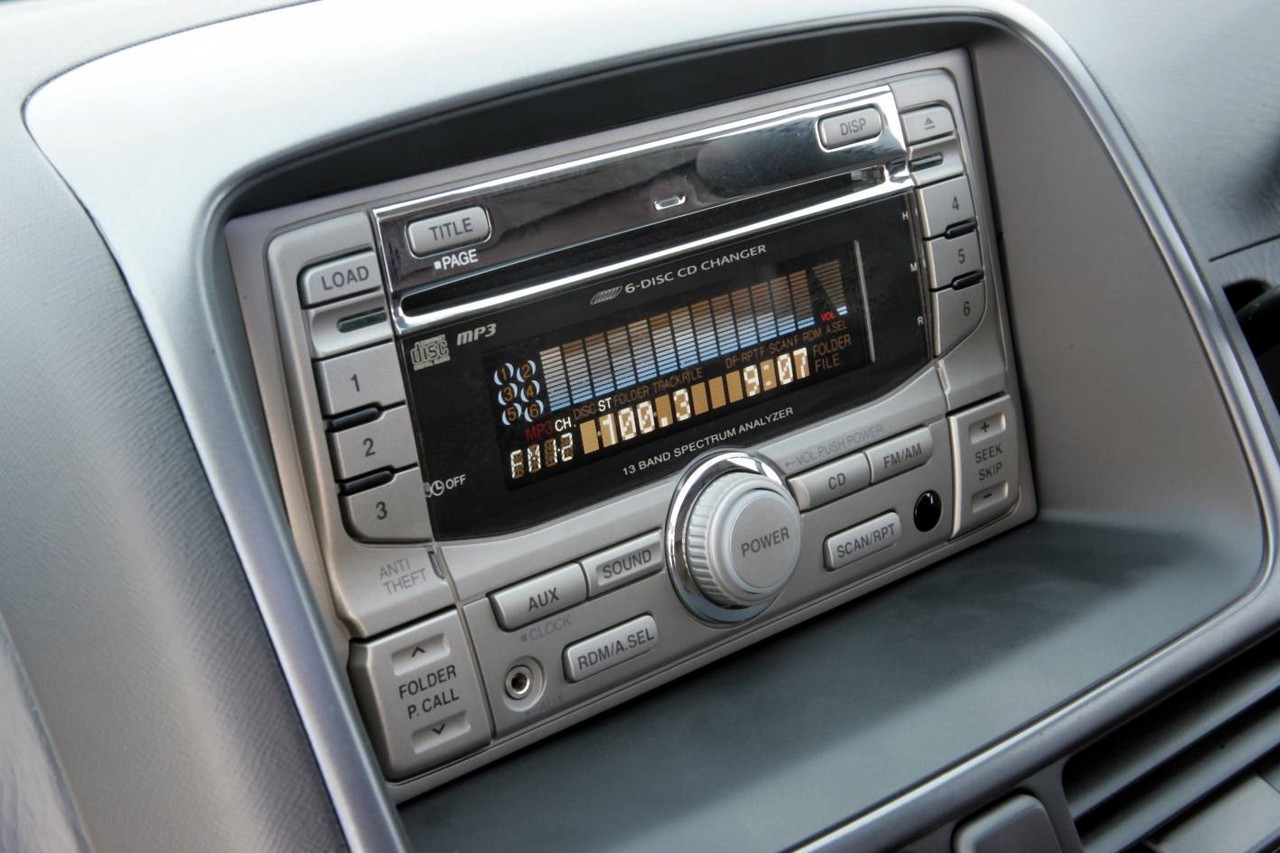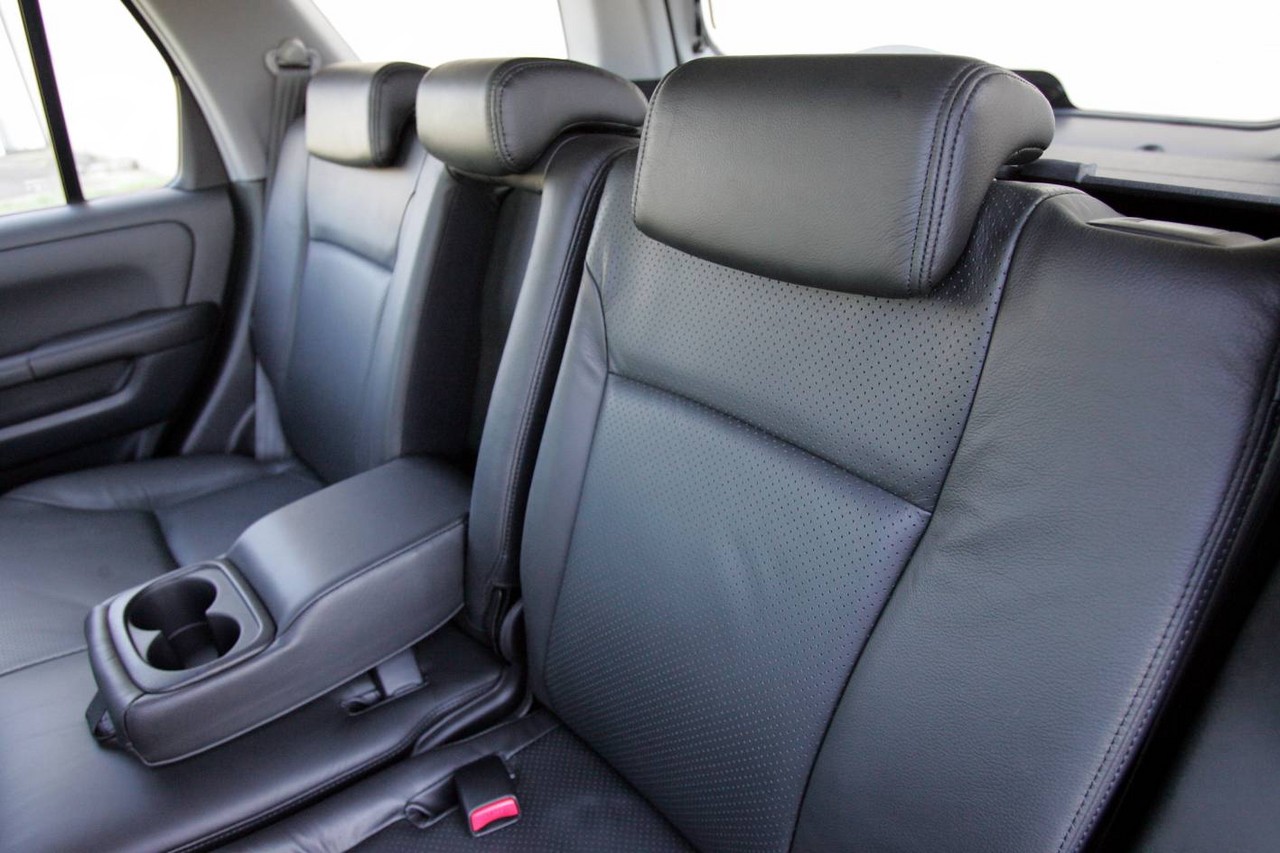
- Responsive and free-revving 2.4-litre petrol engine
- Comfortable ride
- Refined manual transmission
- Practical and spacious interior
- High standard of fit and finish
- Steering wheel kickback over rough surfaces
- Four-wheel drive system slow to react
- Space needed to open tailgate
Honda RD7.I CR-V (2001-04)
Overview
Released in December 2001, the Honda RD7 Series I (RD7.I) CR-V was a compact all-wheel drive SUV (literally ‘Comfortable Runabout Vehicle’). Manufactured in Sayama, Japan, the RD7 CR-V was powered by a 2.4-litre four-cylinder petrol engine that was mated to either a five-speed manual or four-speed automatic, the latter with Grade Logic Control which would hold a lower gear when ascending hills and downshift when travelling downhill for engine braking assistance. Initially, the CR-V was offered in two variants: an unnamed, entry-level variant and ‘Sport’.
K24A1 engine
The 2.4-litre K24A1 engine had double overhead camshafts, four valves per cylinder and Honda’s i-VTEC system which consisted of:
- Variable Valve Timing and Lift Electronic Control (VTEC) which could select from two camshaft profiles for low and high RPM operations; and,
- Continuously variable timing of camshaft phasing on the intake camshaft (Variable Timing Control or VTC).
Dimensions and body
Compared to the RD1 CR-V , the RD7 CR-V was 15 mm longer (at 4535 mm), 30 mm wider (1750 mm) and 35 mm higher (1710 mm), though the wheelbase was unchanged (2620 mm). Furthermore, the new body achieved a 50 per cent increase in torsional rigidity and a 30 per cent increase in bending rigidity.
Suspension
The RD7 CR-V had MacPherson strut front suspension with toe control links and reactive-link double wishbone rear suspension.
| Variants | Engine | Trans. | Peak power | Peak torque |
|---|---|---|---|---|
| [Unnamed], Sport |
2.4-litre petrol I4 | 4sp auto, 5sp man. |
118 kW at 6000 rpm | 220 Nm at 3600 rpm |
‘Real-Time’ AWD
The CR-V was fitted with Honda’s ‘Real-Time’ all-wheel drive system which utilized a dual hydraulic pump rear differential and four-wheel drive transfer case. In normal conditions, the CR-V was front wheel drive; as traction was lost, however, the engine’s torque was progressively directed to the rear wheels.
Safety equipment
Standard safety equipment for the RD7.I CR-V included dual front airbags and front seatbelt pretensioners; the Sport variants were also fitted with ABS and electronic brake force distribution. From November 2002, however, ABS was standard across the range.
Euro NCAP crash and ANCAP testing
In Euro NCAP crash testing , the RD7 CR-V – when fitted with dual front airbags and front side airbags – received a four star adult occupant safety rating with a score of 25.62. In the frontal offset impact test, protection of the driver’s chest and thighs were assessed as marginal, while head and lower leg protection were adequate. In an ANCAP side impact test on an Australian-delivered vehicle without side airbags, the CR-V received the maximum score of 16 points, resulting in an overall score of 26.62.
Features: CR-V and CR-V Sport
Standard features for the CR-V included a four speaker sound system with CD player, air conditioning, 60/40 split rear seats with sliding and folding functions, remote central locking, power windows and mirrors, a tilt adjustable steering wheel, height adjustable driver’s seat, front map lights, courtesy and cargo lights, two 12 volt power outlets and an immobiliser. The RD7 CR-V was also fitted with a two-way tailgate which had a flip-out glass hatch in the door.
Compared to the standard CR-V, the CR-V Sport added 15-inch alloy wheels, cruise control for automatic models, front fog lamps, a power sunroof and hard spare wheel cover. Visually, the Sport variants could be identified by their body-coloured bumpers, mirrors and side protection strips.
2003 CR-V Winter Classic edition
In August 2003, limited run Winter Classic editions were released for the entry-level and Sport CR-V variants; these models were distinguished by their alloy wheels, side steps and tow bar.
Honda RD7.II CR-V (2004-06)
Overview
Released in October 2004, the RD7 Series II (RD7.II) CR-V introduced a revised range, mechanical upgrades and a subtle facelift. Visually, the RD7.II CR-V could be identified by its bigger, 16-inch wheels, more prominent headlights, bonnet and front bumper, silver grille surrounds, slim line reflectors in the rear bumper and clear rear indicator lenses. Mechanically, the ‘Real-Time’ AWD system was upgraded with a one-way ball cam and pilot clutch which was more responsive to wheel spin. Furthermore, the four-speed automatic transmission was replaced by an electronically-controlled five-speed unit with overdrive and thicker stabiliser bars also contributed to greater stability. The RD7.II CR-V also featured drive-by-wire throttle to provide a smoother response to throttle inputs.
| Variants | Engine | Trans. | Peak power | Peak torque |
|---|---|---|---|---|
| [Unnamed], Sport, Sport Leather |
2.4-litre petrol I4 | 5sp auto, 5sp man. |
118 kW at 6000 rpm | 220 Nm at 3600 rpm |
Safety equipment
Standard safety equipment for the RD7.II CR-V included dual front airbags, ABS, electronic brake force distribution and front seatbelt pretensioners; the Sport variant and Extra edition were also fitted with front side (thorax) airbags. Furthermore, the RD7.II CR-V was also fitted with bigger, more effective disc brakes (300 mm at the front, 305 mm at the rear) than its RD7.I predecessor.
Features
Compared to its RD7.I predecessor, standard features were extended to include cruise control, a multifunction steering wheel (audio and cruise buttons), rear cargo cover and security alarm.
Beyond this, the CR-V Sport gained a six-disc CD player with MP3-compatibility and trip computer. Sport Leather variants were further equipped with leather seats and door trim, heated front seats and a leather-wrapped steering wheel.
2005 CR-V Special Edition
In October 2005, a Special Edition model was released; based on the entry-level CR-V, the Special Edition added 16-inch alloy wheels, rear parking sensors and a ‘nudge’ bar.
2006 CR-V Extra edition
In February 2006, an ‘Extra’ edition was released; compared to the standard CR-V, the Extra edition added front side thorax airbags, 16-inch alloy wheels and trip computer.
Related links
